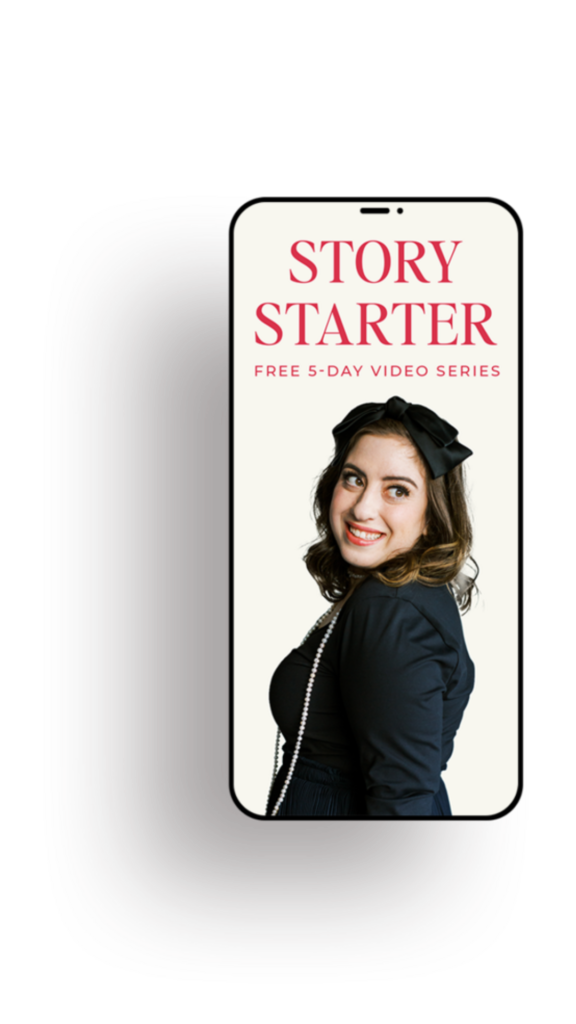Copywriting. Storytelling. I’m sure you’ve seen these words being thrown around like frisbees. But what do they really mean? And why should you give a hoot?
The short answer is, both copywriting and storytelling play an integral role in brand communication.
Understanding their differences and definitions can help inform which one to use and when (psst, sometimes the medium calls for both–but read on to get the full picture).

Definitions
Copywriting is the science, the language that leads to the sale. With an arsenal of formulas, templates, and widely accepted storylines, it combines writing with various sales techniques and human psychology to convert onlookers into purchasers. The process includes the use of best practices and tools to measure and optimize sales, ultimately, relying on Return on Investment (ROI) as the greatest metric of success. Most importantly? It almost always includes a Call to Action (CTA).
Storytelling is the art, the narrative that leads your audience to create an emotional connection with you, your service, or your brand. It serves as the basis for nurturing, the process of welcoming or onboarding your audience, introducing them to your brand, your content, and your purpose through authentic personal anecdotes. It’s the art of hosting people…digitally, welcoming them into your world, often professionally and personally.
How do you measure success?
With Copywriting…
Look at the data.
Numbers. Percentages. Metrics.
Sales. Conversions.
Money…in the bank. With any successful launch, you can calculate an estimated revenue using this equation:

For example, let’s say you have 1,000 people on your email list, and you’re looking to estimate the revenue for your $25 product. 1% – 3% of your 1,000 person list is roughly 10-30 people. With a product that costs $25, you can estimate a revenue between $250-$750.
Now this number is just an estimate. There are several other variables to consider including nurturing strategy, email marketing frequency, authority, credibility, years of experience, comfort with launching, visibility, networking, and so on.
*Brought to you by our favorite Conversion Connoisseur, Nicole Edwards of Nicole L. Edwards Creative.
With Storytelling…
It’s a little more abstract, so start by asking yourself a few questions about the work:
- Is it delivering knowledge? Education? Is your audience satisfied with the information they’re learning?
- Is it creating genuine connections? Whether it be personal or professional, relationships are the future…
- Is it sharing your business purpose? Experience? Is it demonstrating the value you can bring to your audience – be it via your message, voice, or story?
The Best Part?
About Copywriting…

Every time you market your product or service, you’re offering a solution to someone else’s problem. You’re recognizing a need, desire, want, or lack and providing a solution.
It’s important to remember that monetizing your products, services, gifts and talents has a cascading effect on you and those around you. As you share your gifts with the world, not only are you creating a life and living for yourself, but also, for others too.
About Storytelling

Every time you share, you give someone else the opportunity to feel seen, heard, and valued. In sharing your truth, they come to acknowledge their truth, too.
And while you might not always get a response, your words, thoughts, and opinions are out there – taking up space and contributing to an online culture of authenticity, openness, and diversity.
When you speak openly about your brand from a place of good intention, your purpose radiates even brighter.
Sharing is one of the most human-centered ways of selling. When you learn how to share about your brand, your purpose, and your story, you become the marketing vehicle for your business.
The Not-So-Best Part?
About Copywriting…

Selling.
I talk about this with my clients all the time. They hate selling. And here’s the thing – most people do…until one day, they don’t.
If you find yourself in a sea of discomfort, I promise you…one day you’ll come to terms with it too. You’ll come to accept it as a part of the process, a part of how you connect with others, and a necessary part of running a profitable business.
About Storytelling…

Vulnerability.
Trust me, I get it. We’re on the same page here: it can be anxiety-inducing to open yourself up to the world. It’s a scary place out there!
But fear isn’t worth losing your seat at the table. So go on out there, show up as yourself, and just do your best – after all, creating habits starts with practice.
Speaking of which, getting acquainted with storytelling and copywriting IRL can help you decide how to employ them across brand communications. Are you creating a marketing campaign? Writing a blog post? Speaking on a podcast? All things to consider.
Once you identify your core stories, you can transform them to fit any medium. At the end of the day, you want to imbue your marketing with both storytelling and copywriting in order to build trust and offer a solution – all in the same wavelength.

Ready to kick-start your storytelling journey? Sign up for Story Starter to get free strategies, prompts, and storytelling inspiration straight to your inbox!
And, if you’d like to come say hello, find me on Instagram @yasaminsalavatian, I’d love to meet you!




Leave a Reply